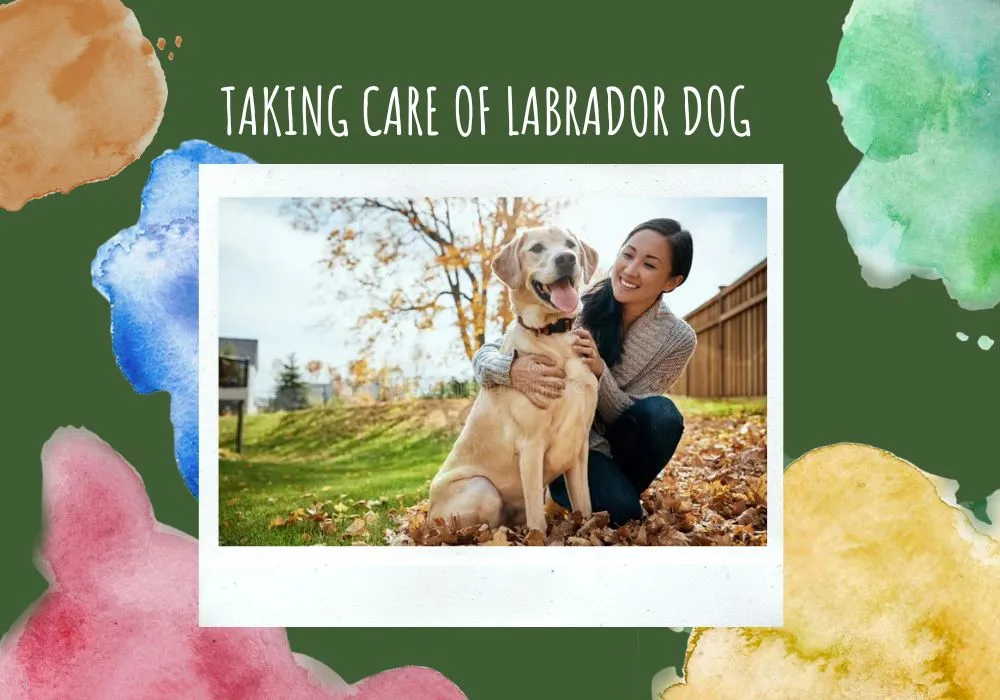Care of Labrador dog are one of the most popular dog breeds in the world, known for their friendly demeanor, intelligence, and versatility. Whether you’re a first-time Labrador owner or looking to enhance your dog care skills, this guide will provide you with essential information to ensure your Labrador lives a healthy and happy life.
1. Nutrition
Balanced Diet: Labradors are active and energetic dogs that require a balanced diet to maintain their health and vitality. Choose high-quality commercial dog food or consult your vet for a homemade diet plan. Ensure the diet includes:
- Protein: Essential for muscle development and repair.
- Carbohydrates: Provide energy.
- Fats: Necessary for a healthy coat and skin.
- Vitamins and Minerals: Support overall health and bodily functions.
Feeding Schedule:
- Puppies (2-6 months): Feed 3-4 times a day.
- Young Adults (6-12 months): Feed twice a day.
- Adults (1 year and older): Feed once or twice a day depending on activity level.
2. Exercise
Daily Physical Activity: Labradors are highly active dogs and need regular exercise to stay healthy and happy. Aim for at least 60 minutes of exercise each day, including:
- Walking or Running: Regular walks or runs to burn off excess energy.
- Playtime: Fetch, tug-of-war, and agility training.
- Swimming: Labradors love water and swimming is excellent exercise for them.
Mental Stimulation: Along with physical activity, mental stimulation is crucial. Engage your Labrador in:
- Training Sessions: Teach new commands and tricks.
- Puzzle Toys: Use interactive toys that challenge their minds.
- Socialization: Regular interaction with other dogs and people.
3. Grooming
Coat Care: Labradors have a double coat that sheds throughout the year. Regular grooming is essential to keep their coat healthy and minimize shedding.
- Brushing: Brush your Labrador’s coat at least twice a week to remove loose hair and prevent matting.
- Bathing: Bathe your dog every 2-3 months or as needed. Use a mild dog shampoo to avoid skin irritation.
Ear Care: Labradors are prone to ear infections due to their floppy ears. Clean their ears weekly with a vet-recommended ear cleaner.
Nail Trimming: Trim your Labrador’s nails every 3-4 weeks to prevent overgrowth and discomfort. If you’re unsure how to trim nails, seek guidance from a vet or professional groomer.
4. Health and Veterinary Care
Regular Check-ups: Schedule regular vet visits for health check-ups and vaccinations. Early detection of health issues is key to maintaining your care of Labrador dog’s well-being.
Common Health Issues: Be aware of common health issues in Labradors and monitor for symptoms:
- Hip Dysplasia: A genetic condition affecting the hip joints.
- Elbow Dysplasia: Affects the elbow joints and causes lameness.
- Obesity: Labradors are prone to weight gain, which can lead to other health problems.
- Ear Infections: Regular ear cleaning can help prevent infections.
Parasite Control: Use vet-recommended flea, tick, and worm preventatives to protect your Labrador from parasites.
5. Training and Behavior
Basic Training: Start training your Labrador as early as possible. Focus on basic commands such as sit, stay, come, and heel. Consistency and positive reinforcement are key to successful training.
Socialization: Expose your Labrador to various environments, people, and other animals to develop a well-rounded temperament. Early socialization helps prevent behavioral issues and ensures your dog is comfortable in different situations.
Behavioral Issues: Labradors are generally well-behaved, but they can develop bad habits if not properly trained. Address issues like chewing, barking, and digging with consistent training and adequate exercise.
Conclusion
Taking care of a Labrador dog involves a commitment to their physical, mental, and emotional well-being. By providing a balanced diet, regular exercise, proper grooming, and consistent training, you can ensure your Labrador lives a healthy, happy, and fulfilling life. Remember to consult with your veterinarian for personalized advice and care tailored to your Labrador’s specific needs.
FAQs
How often should I feed my Labrador?
Puppies need 3-4 meals a day, while adults can be fed once or twice daily depending on their activity level.
How much exercise does a Labrador need?
Labradors require at least 60 minutes of exercise daily, including walks, playtime, and mental stimulation.
How do I groom my Labrador?
Brush your Labrador’s coat twice a week, bathe them every 2-3 months, clean their ears weekly, and trim their nails every 3-4 weeks.
What are common health issues in Labradors?
Common health issues include hip and elbow dysplasia, obesity, and ear infections. Regular vet check-ups and preventive care are essential.
How can I train my Labrador effectively?
Use positive reinforcement and consistency. Start with basic commands and socialize your Labrador early to ensure good behavior.

